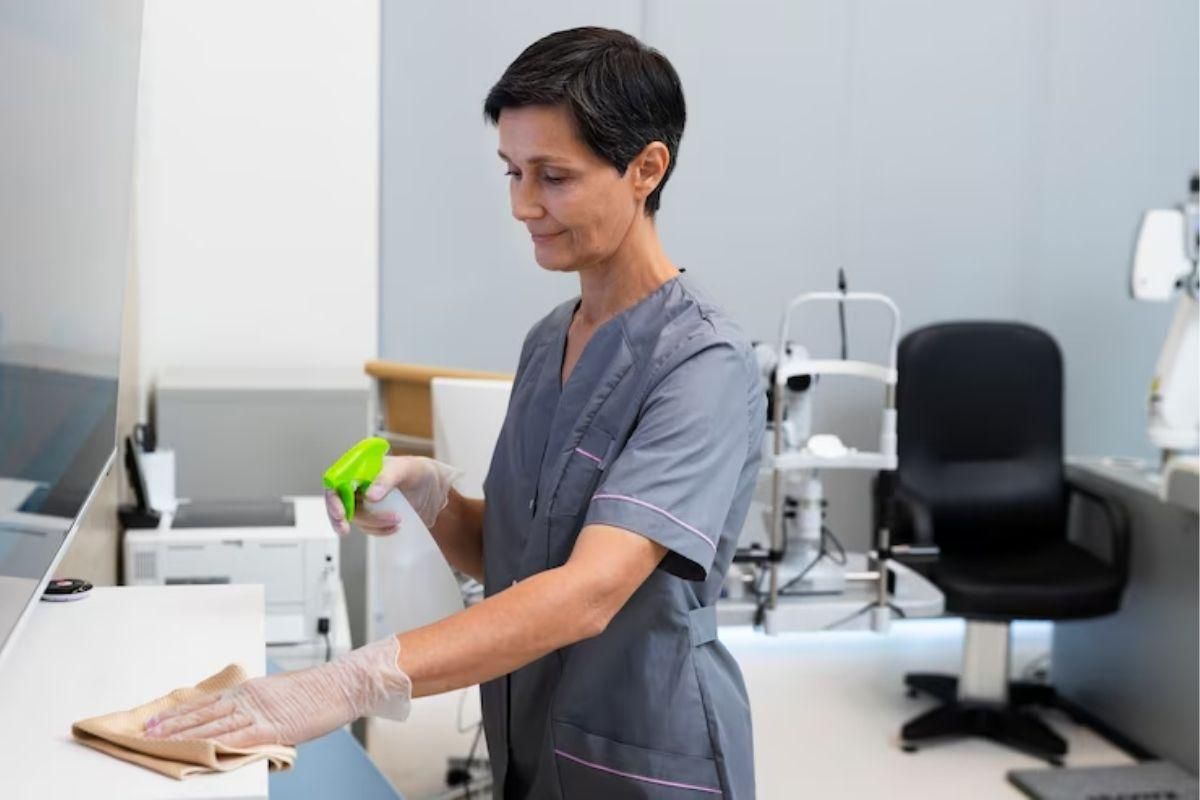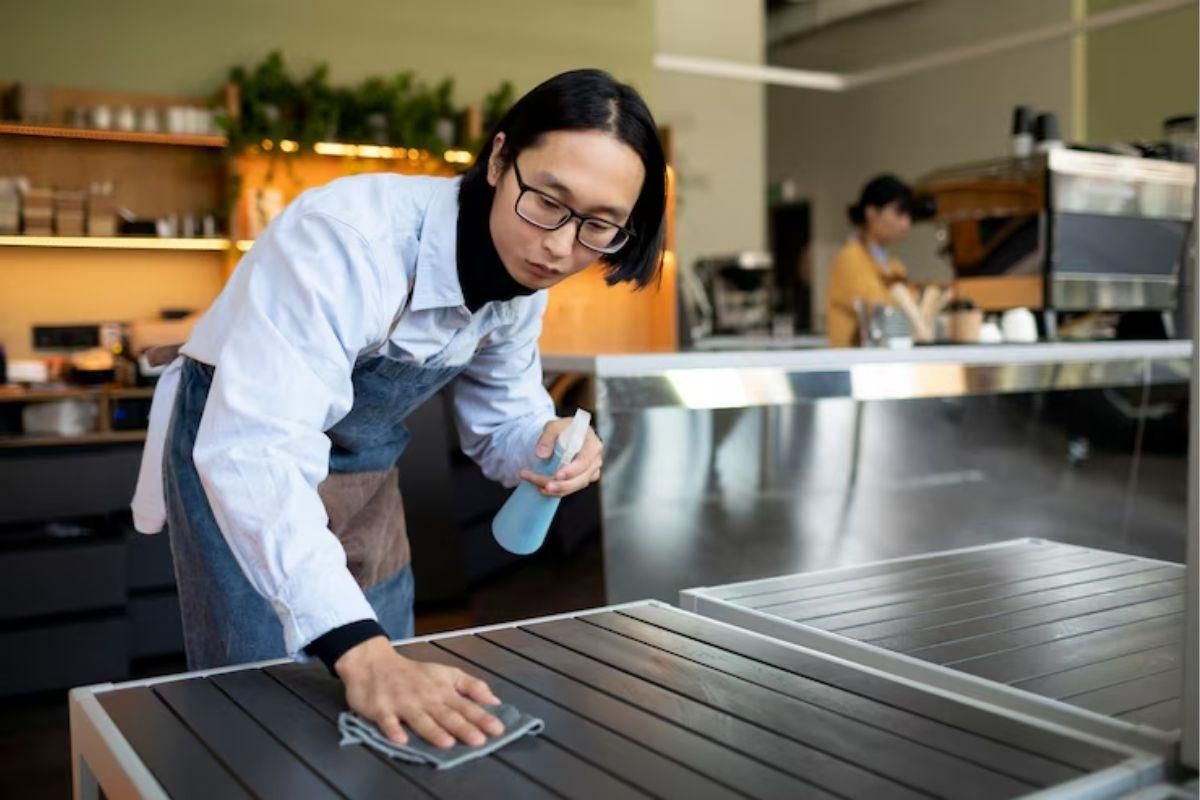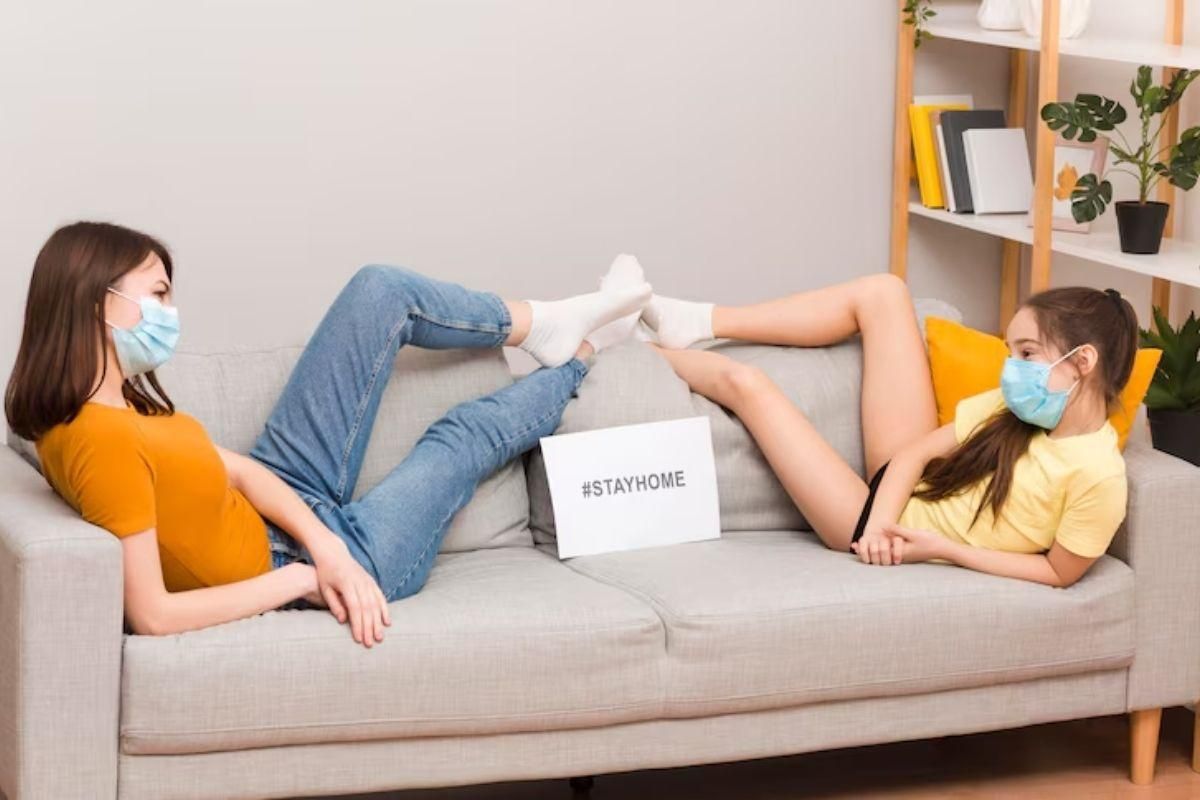Pet Cleaning Made Easy: 8 Tips for a Fresher, Healthier Home
If you share your home with a pet, you know it’s a package deal—unconditional love, wagging tails, and the occasional tumbleweed of fur floating across the floor. Pets bring warmth and joy into our homes, but let’s face it, they also bring mess. From shedding and muddy paws to mysterious smells and “oops” moments on the carpet, living with animals comes with its own cleaning challenges.
The good news? Pet cleaning doesn’t have to be difficult or overwhelming. With a few smart habits, simple strategies, and the right tools, you can keep your space fresh, organized, and safe for both you and your furry friends. In this comprehensive guide, we’ll walk you through everything we’ve learned from years of professional pet cleaning across homes in Sydney. Whether you’re a first-time pet owner or a seasoned pet parent, these practical tips will help you maintain a clean and happy home with minimal stress.
Why Pet Cleaning Matters?
Maintaining cleanliness in a pet-friendly home isn’t just about aesthetics. It's also about health and comfort — both for humans and animals.
- Pet dander can trigger allergies or asthma.
- Untreated pet stains can cause lingering odours and bacteria buildup.
- Dirty pet gear (toys, bedding, bowls) can harbor harmful germs.
With proper pet cleaning practices, you reduce health risks, preserve your furniture, and create a more enjoyable space for everyone.
1. Managing Pet Hair: The Never-Ending Battle
Pet hair is easily the most visible mess left behind by furry companions. It clings to carpets, clothing, and upholstery.
Regular Grooming
Your first line of defense in pet cleaning is grooming.
- Brush daily or several times a week depending on your pet’s coat type.
- Do it outdoors or over tiled floors to reduce indoor hair.
- Consider a de-shedding tool for heavy shedders like Labradors or Huskies.
Routine grooming reduces shedding drastically and makes pet cleaning more manageable.
The Right Vacuum
Invest in a vacuum built for pet homes. Look for:
- Strong suction
- HEPA filters to trap allergens
- Anti-tangle brush heads
Robotic vacuums with pet-hair detection features can maintain daily cleanliness, especially in high-traffic zones.
Microfiber Tools
Microfiber mops and cloths attract hair like magnets. They’re reusable and perfect for hard floors, making them ideal tools for everyday pet cleaning.

2. Controlling Pet Odours
Let’s be honest: your house may not smell as fresh as it used to before your four-legged friend moved in. But there are simple ways to fix that.
Ventilation
Good airflow helps eliminate odors.
- Open windows daily, even just for 10–15 minutes.
- Use exhaust fans in litter box or feeding areas.
- Place indoor plants that help purify air (non-toxic varieties only).
Air Purifiers
A high-quality air purifier with a carbon filter absorbs pet smells and dander. It’s a smart investment for multi-pet homes and small apartments.
Wash Pet Bedding Weekly
This is a big one in pet cleaning:
- Wash beds, blankets, and soft toys weekly.
- Use hot water and a mild, pet-safe detergent.
- Dry thoroughly to prevent mold or mildew.
You’ll notice a big difference in just one week.
3. Cleaning Pet Accidents: Stay Calm and Act Fast
Even house-trained pets can slip up, especially when they’re sick, stressed, or adjusting to a new space.
Immediate Response
- Blot liquids immediately with paper towels or a cloth.
- Scoop solids without spreading the mess.
- Don’t rub — it spreads the stain and pushes it deeper.
Quick action is critical in pet cleaning to prevent lasting damage.
Enzymatic Cleaners
These break down the organic components in urine, vomit, and feces. Key tips:
- Avoid ammonia-based cleaners (they mimic urine smell and can encourage re-marking).
- Always test on a small patch of carpet first.
- Repeat applications may be needed for old stains.
Professionals in pet cleaning services rely heavily on enzymatic cleaners, and for good reason—they’re the most effective for odor and stain removal.
4. Keeping Surfaces Clean and Fur-Free
Daily Dusting and Wiping
Use microfiber cloths to:
- Dust furniture, shelves, and vents
- Wipe food bowls and surfaces in feeding zones
- Clean around windowsills where pets perch
This not only removes visible mess but helps reduce allergens too — an essential step in thorough pet cleaning.
Don’t Forget the Floors
Hard floors should be vacuumed or swept daily in pet zones. For carpets, aim to:
- Vacuum at least twice per week
- Deep clean monthly or quarterly
Spot-clean muddy paw prints as soon as they appear using a damp cloth and mild detergent.
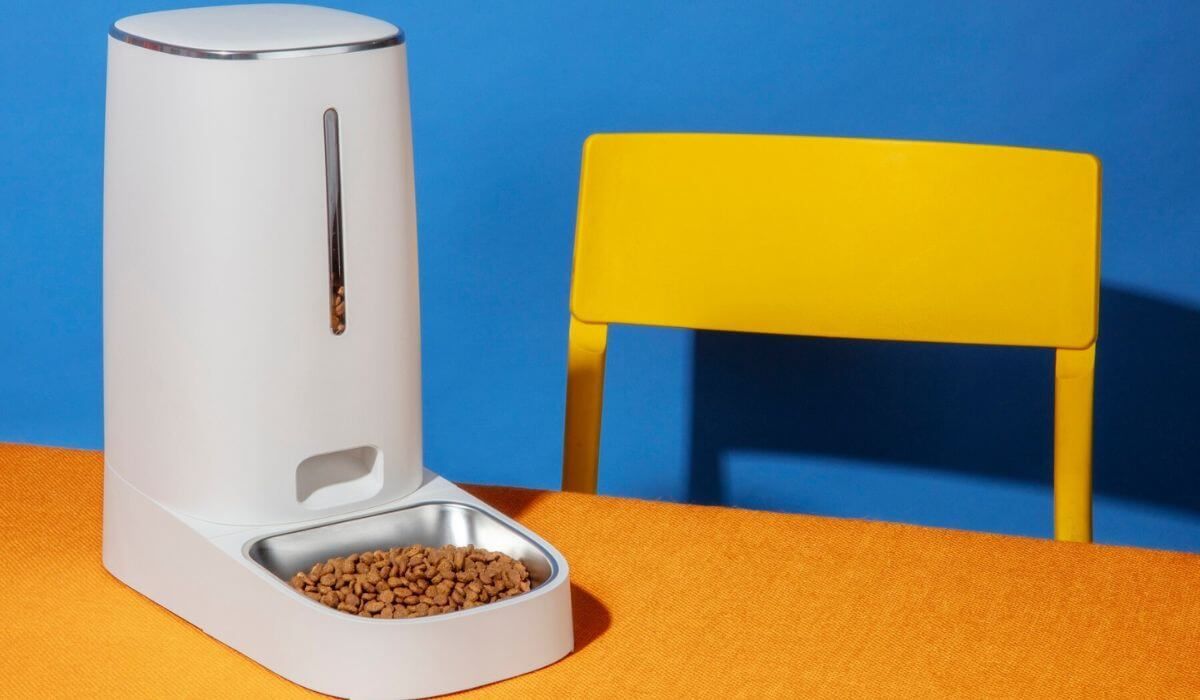
5. Pet-Safe Cleaning Products
One of the most overlooked but important aspects of pet cleaning is safety. Many everyday cleaning products contain chemicals that are toxic to animals.
What to Avoid
- Bleach
- Phenols (common in disinfectants)
- Essential oils like tea tree, eucalyptus, and clove
Pet-Friendly Alternatives
- White vinegar and baking soda for natural disinfecting
- Castile soap for mild cleaning jobs
- Commercial pet-safe cleaners with non-toxic certifications
Always store chemicals securely and never clean when your pet is nearby.
6. Organising Pet Gear: Declutter and Simplify
From toys to grooming tools, pet items pile up fast.
Create a Pet Station
- Use bins or baskets for toys and gear
- Place food and water on a silicone mat for easy wiping
- Hang leashes and harnesses near entryways
This keeps your home tidy and ensures pet cleaning doesn’t feel like a scavenger hunt for lost chew toys.
Wash Accessories Regularly
- Toys (especially plush) should be washed weekly
- Food and water bowls should be cleaned daily
- Litter scoops, brushes, and leashes need monthly cleaning
7. Building a Pet Cleaning Routine
Consistency makes pet cleaning easier over time. Here’s a suggested breakdown:
Daily Tasks
- Brush pet
- Wipe paws
- Vacuum high-traffic areas
- Refresh water bowls
- Clean up any visible messes
Weekly Tasks
- Deep vacuum carpets and upholstery
- Wash pet bedding and toys
- Mop floors
- Clean litter boxes or replace puppy pads
Monthly Tasks
- Check for deep stains or lingering smells
- Inspect and clean HVAC filters
- Wash collars, leashes, and crates
8. When to Hire Professional Pet Cleaning Help
Sometimes, a professional touch is necessary—especially if:
- You're dealing with stubborn odours
- You’re moving or expecting guests
- There’s been a pet illness or infestation
At Everyday Clean, we offer specialized pet cleaning services in Sydney tailored to pet-loving households. Our team uses only pet-safe products and proven methods to restore freshness, hygiene, and peace of mind.
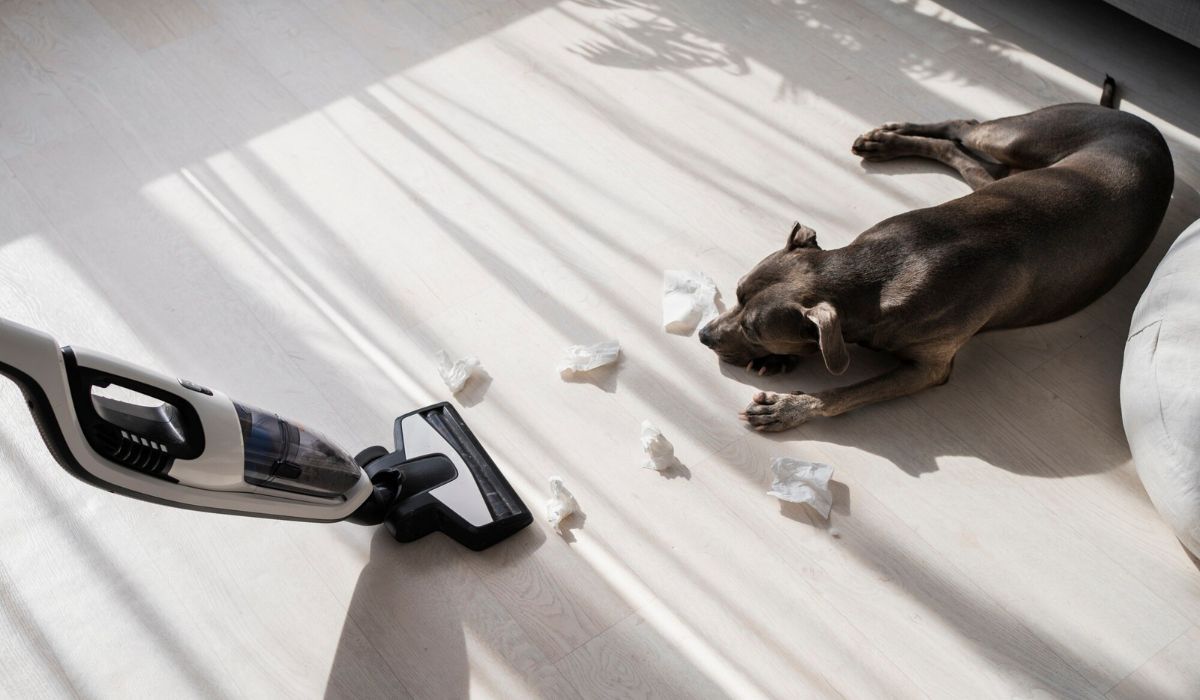
Conclusion
Sharing your life with a pet is one of life’s greatest joys—but it doesn’t mean your home has to suffer. With consistent habits, the right tools, and a focus on pet cleaning, you can enjoy a clean, welcoming space without sacrificing the snuggles and slobbery kisses.
Remember:
- Groom often to prevent mess before it starts.
- Use enzymatic cleaners for accidents.
- Prioritize safety with pet-safe cleaning products.
- Declutter pet items and wash accessories regularly.
- Create a daily and weekly cleaning plan.
And when in doubt—or when the mess gets overwhelming—call in the professionals. At Everyday Clean, our pet cleaning experts are ready to help your home stay as lovable as your furry companions.
Contact us today to book a one-time clean or set up a regular service tailored to your needs. A cleaner, happier, pet-friendly home is just one step away!
